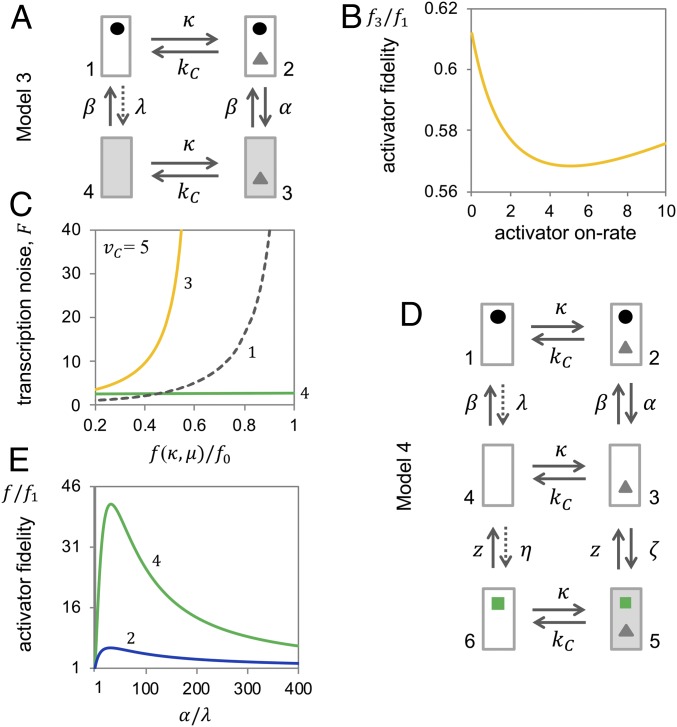Fig. 3.
Kinetic proofreading requires coupling of transcript initiation to activator binding; multiple proofreading steps improve fidelity. (A) Transition graph of Model 3. (B) Activator fidelity of Model 3 relative to the fidelity of Model 1 , as a function of activator on-rate, ; with , , α = , and (for , fidelities further decrease). (C) Transcription noise as a function of relative activator fidelity, , for Model 3 (yellow, 3), Model 4 (green, 4), and Model 1 (gray dashed line, 1). As in calculations for Fig. 2, we assumed and ; for Model 4 alone: and to reflect both active removal (by Mot1) and high concentration of TBP; all other parameters were as indicated above. Fano factor and fidelity were calculated as functions of the activator on-rate, κ, and the rate of transcription in the active state, (SI Appendix). (D) Transition graph of Model 4. (E) Activator fidelities of Model 4 (green, 4) and Model 2 (blue, 2) relative to fidelity for Model 1 as a function of . For Model 4, we assumed (thus, both parameters are varied equally) and . Other rate constants were , , , and . (For smaller , and z than assumed here, fidelity further increases; SI Appendix.)

